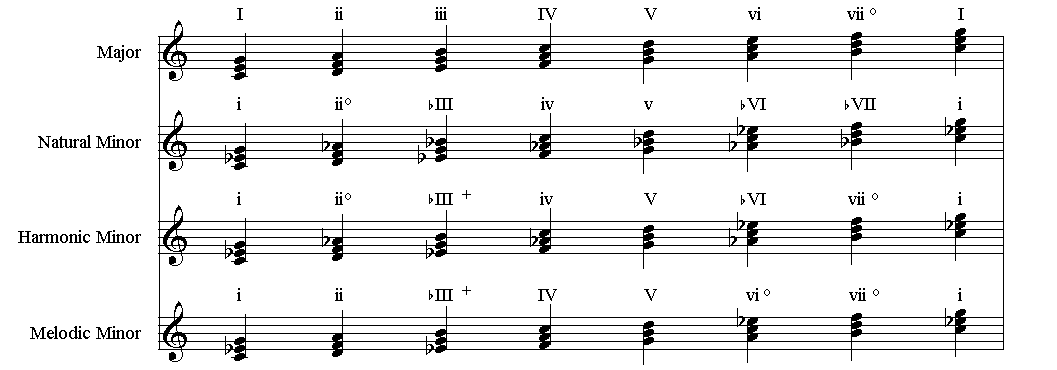

the tertian Chords of the Harmonic MAJor Scale Let's start by building the triads and seventh chords made from tertian harmony. The chords we create will all be part of the Harmonic Major Scale. We are able to build chords out of each of these modes. This makes it easier to identify our thirds, fifths, sevenths, and other chord tones compared to the root note! Here are the modes of the Harmonic Major Scale: By looking at the modes, we can re-calibrate our scale degrees and build chords based on new “tonics” (1s). To build the chords of the Harmonic Major Scale more easily, let's first look at its modes. Therefore, in both cases, the chord based on the V degree is major.This one changed note in the Harmonic Major will yield different harmonization and chords than its two similar heptatonic scales. E# is characteristic of harmonic and melodic minor scales. Or you can notice that the key is F# minor.A triad based on the III degree of the major scale is minor, but here the third of the chord is a major third because it has been raised. First, you can see that the key is A major.There are two ways to identify the type of triad. Triads built on the II degree of major scales areĬ# major. Triads formed on the fifth degree of the major scale are major.Ĭ minor. The chord is built on the V degree of the scale. Knowing the type of triad built on each scale degree can help you identify triads quickly.ĭ major. The following table shows the combination of intervals characteristic of each type of triad: Triad You can also identify the two thirds that make up the chord.

One way to do this is to identify the third and then the fifth. Using your knowledge of intervals, you can quickly identify triads. Therefore, it is important to develop the ability to identify intervals, especially thirds and fifths. Being able to identify triads quickly and accurately is essential if you want to be able to analyze and understand the music you are performing or listening to.


 0 kommentar(er)
0 kommentar(er)
